The most promising US military projects, the use of which is possible for peaceful purposes
Multimillion funds are allocated annually to the development of technological equipment of military forces and science. The research agency of advanced defense projects, which is best known for its American abbreviation DARPA, is developing in this area. This agency is the author of such inventions as the Internet, GPS and airplanes such as stealth, which are of great importance not only for the military, but also for ordinary civilians.
At the moment, the agency is engaged in the development of a significant number of projects that can also have a significant impact on humanity, if only they are allowed into industrial production.
Currently DARPA pays great attention to the development laser systems. Among the programs of the Agency are the following programs: Excalibur, Architecture for Diode High Energy Laser System, Ultra Beam and Compact Mid-ultraviolet technology.
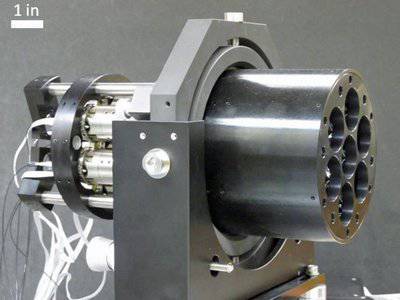 Excalibur small-sized laser guided gun
Excalibur small-sized laser guided gunThe military departments are always very concerned to use the perfect weapon in urban warfare. But to equip planes and Drones laser weapons, it is necessary that their dimensions be quite compact and much more effective than the systems that currently exist and are installed on large platforms. The DARPA agency has begun developing a compact and powerful laser weapon system that is designed to be installed on aircraft and other aircraft.
Previously, the easiest way to create a laser was to use large tanks with toxic active chemicals. In particular, such a laser is mounted on a Boeing-747, but it is at least impractical to use such an overall apparatus as a weapon on an attack aircraft or fighter.
The new Excalibur laser gun is much lighter and more compact. Schematically, this gun consists of a large number of lasers, independent of each other. Thus, it is possible to reduce the size of the emitters themselves. These emitters should be combined into one beam without losing its power. Thanks to this principle, the amount of energy consumed is significantly reduced. But the gun has certain drawbacks. So, in particular, there are a number of problems associated with the combination of multiple rays into one, which would have greater brightness and low divergence. Obstacles to achieving this are interference, diffraction, and other non-linear effects. Therefore, to correct this problem, the creators used an analogue phased array antenna, which is used in modern radar and provides an opportunity not only to focus the beam, but also to correct its deflection angle without turning the antenna itself.
Until the end of the year, the agency promises to demonstrate a prototype laser gun with a power of just 3 kilowatts. But the completed system will have much more power (of the order of 100 kilowatts). Thus, it can be used for pinpoint strikes against air and ground targets. And since the weight of the gun will be 10 times less than the currently existing lasers, the Excalibur can be installed on almost any military platforms without compromising their combat performance.
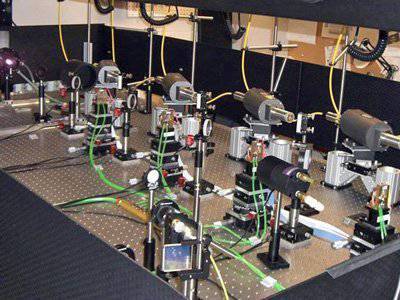 Architecture for Diode High Energy Laser System
Architecture for Diode High Energy Laser SystemAnother new agency program, called the Architecture for Diode High Energy Laser System (ADHELs), is dedicated to researching the new length of a laser beam in the process of creating a new generation of compact high-performance high-energy lasers. Such systems can be integrated on tactical aircraft, in particular, on UAVs.
The program is primarily aimed at developing technologies for producing laser beams of high power and brightness, with a small divergence of the beam.
The program is designed for 36 months and consists of two stages. At the first stage, it is supposed to study the spectral and coherent combination of the beam. The second stage is fully focused on creating a spectral beam of high efficiency and power. The ultimate goal of the project is to obtain a diffraction structure of a system that will operate on long laser waves on a scale of HEL class systems in kilowatts of 100.
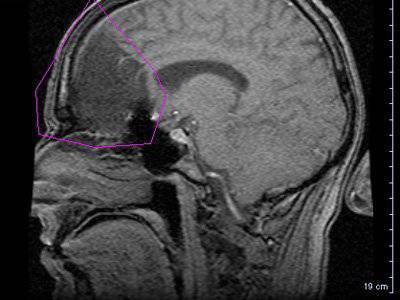 Ultra beam
Ultra beamCurrently, the agency has several projects to improve lasers. So, one of such programs is Ultra Beam, the purpose of which is to create a laser with gamma radiation. At the first stage of development, certain results were already achieved - X-ray lasers were created under laboratory conditions, in which the photon energy was equal to 4,5 keV, which proves the fact that the gamma laser is the work of the near future. Such a development is also of civilian importance, since compact gamma lasers can be used with greater efficiency in radiation therapy and diagnostics.
Unique in its characteristics, the X-ray laser, the technology of which is developed by DARPA, can contribute to the development of laboratory compact sources with high brightness of coherent radiation, which as a result will allow to derive three-dimensional models of living cells.
In the program "Ultraluch" there are two stages. At the first stage, X-ray saturation enhancement on 4,5 keV with 10mJ power was achieved, and it was proved that these rays can transmit pulses through opaque solid-state objects, for example, containers. At the second stage, it is envisaged to develop a higher power X-ray laser for 36 months, diagnose gamma rays and set the necessary parameters to amplify gamma radiation when used on solid-state materials with a large number of atoms.
 Compact Mid-ultraviolet technology
Compact Mid-ultraviolet technologyThe military must be able to detect and identify chemical and biological weapons that may be in the arsenal of the enemy. But modern detection methods are large and heavy, and they also require high power. In order to eliminate these shortcomings, DARPA began to develop the Compact Mid-ultraviolet technology program. The results that are planned to be obtained under this program will make the detection and identification of biological and chemical weapons using laser technology more effective. With the help of ultraviolet waves of medium length, amino acids and other biological molecules can be detected, so if such a type of weapon is used, these elements can be identified.
Laser detection technologies for OMP already exist inside ultraviolet rays in large lasers, in particular, in KrF (248 nm). Small lasers (Biological Point Detection System) are currently used at the chemical battalion level. But, as noted above, all these systems are so expensive and large, so they are extremely inconvenient for widespread use. Therefore, the program proposed by the agency will be presented in two main areas: with the orientation of 250-275 nm LEDs and 100 mW of output power, as well as lasers with 10mW power and 220-250 orientation. The main part of the program will be aimed at solving problems associated with limiting the arrangement of a group of nitrides as semiconductors of medium-short UV waves.
The implementation of this program will allow you to create compact devices that can detect chemical and biological contamination such as water.
DARPA promising programs medical field. These include the projects of the Agency Dialysis-Like Therapeutics (DLT), In Vivo Nanoplatforms, Living Foundries, Reliable Neural-Interface Technology.
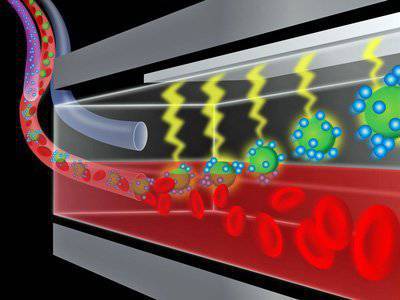 Dialysis-Like Therapeutics (DLT)
Dialysis-Like Therapeutics (DLT)Infections caused by bacteria are often the result of blood poisoning (sepsis), from which even a light-wounded soldier can die. The US military is seriously concerned about this issue, therefore, commissioned to develop a new technology to clean the blood from bacteria. DARPA has begun the development of a project, the cost of which amounted to 10 million dollars. Its main goal is to create a portable device with which it would be possible to remove infected blood from the body, clean it of harmful substances using special filters, and then return clean blood to the body. This device in its functions resembles renal dialysis.
Currently, sensors are being developed for pathogenic substances that will stop viral and bacterial toxins. In addition, technology is being developed to separate these components from the blood. The next step should be to conduct a test to verify the effectiveness of this device. In the end, you should have a portable machine that will carry out a detailed analysis of the entire blood volume at a time, which will allow you to detect the appearance of viruses and toxins at an early stage.
Such technology will be of great importance for civilian use, because with it you can save hundreds and thousands of lives each year.
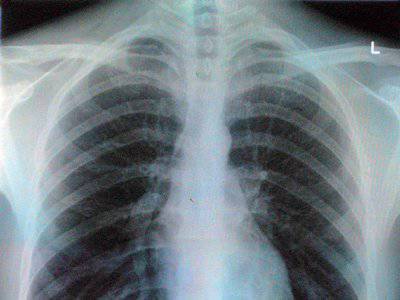 In Vivo Nanoplatforms
In Vivo NanoplatformsAll sorts of diseases limit the combat readiness of soldiers and cause substantial expenditures for the military on health care. But at present, the existing technologies for diagnosing diseases are mostly expensive and time consuming. Therefore, faster diagnosis and treatment are necessary in the modern army.
Agency DARPA began the development of another promising project called "In Vivo Nanoplatforms". Its essence boils down to the creation of a new class of nanoparticles designed for uniform accurate sensing of the human body, as well as for the treatment of various kinds of infectious diseases and physiological abnormalities.
In fact, the program aims to develop nanocapsules, which will provide continuous monitoring of the state of the human body.
A nanocapsule is a hollow spherical particle, the shell of which is made of phospholipids or polymers. Inside this capsule is a low molecular weight substance. In addition, the shell can be made of DNA molecules, organized in a certain way, calcium silicate or hydroxyapatite.
The use of nanoparticles can provide a point injection of drugs or genetic structures of a certain composition (hormones or enzymes). And in order to deliver the nano-capsule “to its destination”, its shell will be equipped with receptors or antigens.
The program was tested in March 2012. It is expected that in the fall it will be approved for use.
 Living foundries
Living foundriesModern engineering is based on painstaking special developments, the results are obtained only after repeated trials and errors. And very often, work on one project does not allow starting work on another. As a result, tens of years and hundreds of millions of dollars are allocated for one bioengineering project. Improvement of bioengineering technologies will allow to solve complex issues that currently either have no solution at all or have several solutions at once.
The new DARPA program called Living Foundries is designed to create a new biological basis for designing human biology construction systems and expanding their complexity. The program is aimed at the development of new technologies and methods that will make it possible to solve previously unsolved problems. In particular, it will be possible to determine the genetic predisposition of a person to certain diseases, correct the functions of the cells and the organism as a whole.
On the one hand, it may seem that such technologies cannot be created, however, the very possibility that mass production of new biological materials and drugs will appear sounds tempting.
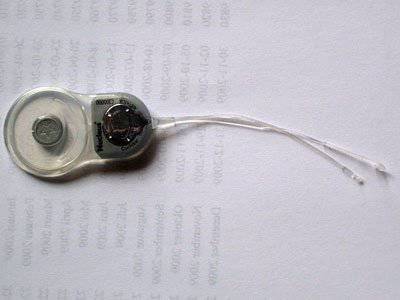 Reliable Neural-Interface Technology
Reliable Neural-Interface TechnologyThe development and research of neural prostheses, in particular, cochlear implants (artificial ears), proved that the human body perceives this material. With the help of such prostheses, lost functions were restored to many people. Despite the fact that prostheses that can be connected to the human nervous system are very promising and important for the military ministry, there are two major and fundamental obstacles that make it impossible to use such implants in a clinical setting. Both obstacles are related to the accuracy of information transfer. Thus, a miniature portable neural device is not adapted to obtain accurate information from nerve cells for many years. In addition, these prostheses can not use the received signals and control them with great speed.
The agency is interested in solving these two problems so that prostheses can be launched into clinical use. Thus, the recovery of wounded soldiers will be faster, respectively, they will be able to return to service much faster.
First of all, the program aims to understand why implants cannot serve reliably for several years. Research is planned on the interaction parameter between abiotic and biotic systems. In addition, a new system will be created, which will include information on how information is transmitted from nerve cells to prostheses.
It can be argued that this technology will also have extensive civilian application.
DARPA development programs observation system of systems.
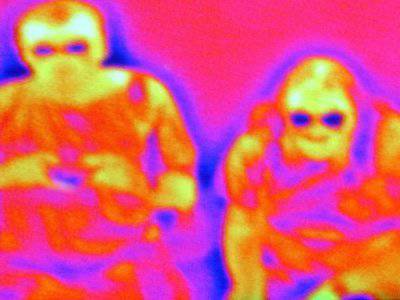 Low Cost Thermal Imaging Manufacturing
Low Cost Thermal Imaging ManufacturingThe thermal vision system has many uses for military purposes. But so far this system is extremely expensive, so its application is not as extensive as necessary. Agency DARPA offers a program to develop a cost-effective thermal imager. According to the developers, such thermal imagers are quite possible to be embedded in communicators and mobile phones. 13 million dollars has been allocated for development. Moreover, the completion of the project should take place no later than in three years.
The basic requirements for new-generation thermal imagers are a relatively small price - about 500 dollars. In addition, the resolution of the resulting image should be no less than 640 * 480 pixels, the viewing angle - 40 degrees and more, and power consumption - less than 500 milliwatts.
The technology of the new thermal imager is based on the use of infrared radiation, which helps to distinguish warm from cold objects in the color spectrum. Thus, they can be used not only in normal conditions, but also in poor visibility and at night.
Thermal imagers that exist at the present time are of large size and high cost. It should also be said that if the research is successful, then not only military but also civilian organizations will be able to use the results. Recall that such DARPA developments as hypertext technology and a graphical interface were also originally developed for military purposes.
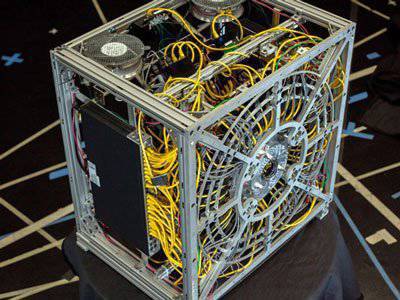 Advanced Wide FOV Architects For Image Reconstruction And Exploitation
Advanced Wide FOV Architects For Image Reconstruction And ExploitationThe ability to see further, with higher clarity in all conditions is one of the factors for the success of military operations. There is a need to increase the field of view, the ability to see equally well both during the day and at night, provided that the camera costs little. The main reason for this need lies in providing soldiers with accessible visualization tools to increase their combat effectiveness, in other words, photos and video cameras. Therefore, the Advanced Wide FOV Architects For Image Reconstruction and Exploitation (AWARE) program was launched in DARPA, which is designed to solve such problems.
The new visualization system that is planned to be obtained as part of the implementation of this program will be very compact and easy. It involves increasing the field of view, high resolution and high-quality image in all weather conditions, day or night at a considerable distance. It combines more than 150 cameras in a single lens. The system is designed to create images with resolutions from 10 to 50 gigapixels - this resolution greatly exceeds the range visible to the human eye.
The first such systems will be designed for deployment on ground objects, they will increase the distance of vision, performance, day and night vision, set the ability to search for a target, ensured the possibility of using a large group of sensors.
Such devices are of great military importance, since they can be used for such purposes as targeting, sensing, and conducting continuous monitoring.
At present, almost any military product is stuffed with electronic components, microchips, chips, etc. Therefore, quite a lot of DARPA programs are aimed at developing and improving component base. Among such programs are the following: Intrachip Enhanced Cooling; Integrity and Reliability of Integrated Circuits; Power Efficiency Revolution For Embedded Computing Technologies; Tip-Based Nanofabrication and others.
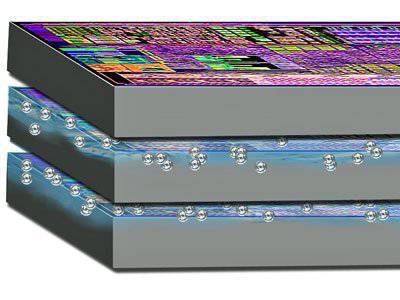 Intrachip Enhanced Cooling
Intrachip Enhanced CoolingThe increase in the number of components in modern electronics has raised the level of heating and power dissipation to unprecedented heights. At the same time, it is not yet possible to limit the rise in temperature without increasing the volume and weight of the electronic systems themselves. The use of remote cooling, in which heat must be conducted from the microcircuits into the air, is no longer effective.
Therefore, DARPA began developing a program called “Intrachip Enhanced Cooling (ICECOOL)”, with which it seeks to overcome the limitations of remote cooling. The program will study the heating level inside the chips using silicon. The agency seeks to prove that cooling is just as important an aspect in chip design as the rest of the components. The project assumes that internally cooling will be installed either directly into the microcircuit, or else in the micro gap between the chips.
In case of successful completion, the project will provide an opportunity to reduce the level of density of the chip itself and cooling systems, which will be very effective for creating a new generation of electronic systems.
 Thermal Management Technologies
Thermal Management TechnologiesSignificant improvements in technology and system integration have led to a significant increase in the level of energy consumption by the military department. The power consumption level has increased, while the size of the microcircuits has decreased. This led to these systems starting to overheat. Therefore, DARPA launched the development of the Thermal Management Technologies program, which is studying and optimizing new nanomaterials with a heat sink system, which are planned to be used in the production of microchips. The program develops in five main areas: microtechnologies for cooling heat exchangers, active cooling of modules, adapted technology of heat pipes, upgraded power amplifiers, thermoelectric coolers.
Thus, the main efforts of the program are aimed at developing and creating high-performance heat distributors, which are based on two-phase cooling and the replacement of copper alloys, which are currently used in systems; increasing the level of thermal cooling by reducing thermal resistance; the development of new materials and structures that can reduce heat; studying cooling technologies using thermoelectric modules.
 Power Efficiency Revolution For Embedded Computing Technologies
Power Efficiency Revolution For Embedded Computing TechnologiesMost of the currently existing military information systems were limited in terms of computational capabilities due to electrical power limitations, size and weight, and cooling problems. Such a restriction has a significant negative impact on the operational management of military departments, because, for example, intelligence and reconnaissance systems collect more information than can be processed in real time. Therefore, it turns out that intelligence is not able to provide valuable data required at a certain time.
Existing information processing systems are capable of processing 1 gigabytes of data per second, while military approval requires 75 more times. But modern processors have already reached their maximum in the process of increasing power without increasing energy consumption. The DARPA Power Efficiency Revolution For Embedded Computing Technologies (PERFECT) program is designed to provide the necessary energy efficiency.
The program aims to achieve an increase in information processing capacity 75 times. The implementation of this program can make it possible to create smartphones that can work for weeks, or laptops, the battery of which will need to be charged as often as you refill the car.
 Tip-Based Nanofabrication
Tip-Based NanofabricationThe agency spends a lot of money on the development of nanotechnology. But despite the fact that the basic concepts in their development are recognized as necessary, there are still problems with their mass production.
The goal of the Tip-Based Nanofabrication program is to establish control over the quality of the production of nanomaterials — nanowires, nanotubes, and quantum dots, which includes controlling the size, orientation, and position of each product. The program involves combining control with innovative technologies, thus creating high temperatures, high-speed flows, and powerful electromagnetic fields like optical technology.
At present, it is impossible to control the process of nanoproduction. In recent years, certain techniques have been demonstrated, but all of them have significant drawbacks. So, for example, in the production of nanotubes it is possible to control only their growth, but not the size and orientation. When creating quantum dots, it is impossible to create a large array with high uniformity.
In case of successful completion of the project, its results will be extremely important for the production of nanoproducts.
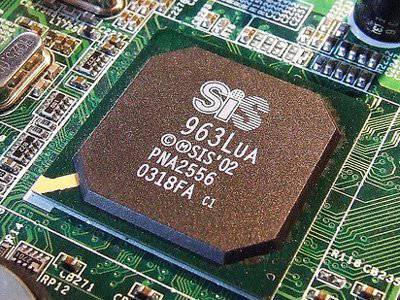 Integrity and Reliability of Integrated Circuits
Integrity and Reliability of Integrated CircuitsMany electronic systems that have been developed for the US Department of Defense are based on integrated circuits. At the same time, the military department uses them with extreme caution, worrying about the integrity of these systems. Since in the conditions of globalization of the market most of the chips are manufactured in illegal enterprises, there is a danger that the schemes acquired for the systems of the military department will not meet the specifications and, accordingly, will not be reliable.
The Agency DARPA, in the framework of the program "Integrity and Reliability of Integrated Circuits (IRIS)" seeks to develop such methods that can ensure the verification of the functions of each chip without destroying it. The system of these methods includes advanced device recognition of a deep submicron scheme, as well as computational methods for determining the connection between devices.
In addition, the program provides for the creation of innovative methods for modeling devices and conducting analytical processes aimed at determining the reliability of integrated circuits by testing a small number of samples.
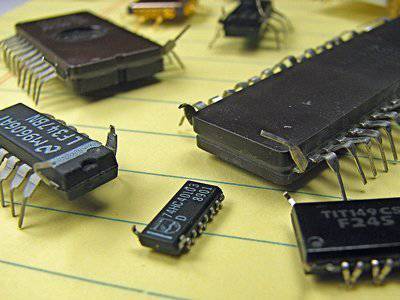 Leading Edge Access Program
Leading Edge Access ProgramAs mentioned above, most of the chips used in the United States are manufactured outside the country. This state of affairs, according to Americans, is detrimental. First, the lack of access to advanced technologies contributes to the outflow of highly qualified personnel from the country. Secondly, the Ministry of Defense does not trust such chips too much.
Research in the field of semiconductor technology is of great importance for the introduction of technological developments not only in commercial structures, but also in the military department. Therefore, the agency launched a new program called the Leading Edge Access Program, which aims to provide universities, industry and government agencies with advanced military semiconductor technology. All this is being done in the hope of returning the production of microchips back to America soon.
Applications of advanced technologies include digital replacement of analog or integrated chips with mixed signals, auxiliary integrated chips with mixed signal, solving the problem of high speed and low power analog-to-digital converters and multi-core processors. At a certain time, the military will provide the agency with new projects. The main selection criteria will be the novelty of the design, the possibility of application in the military industry, as well as the potential for successful mobilization of work efficiency.
 Diverse Accessible Heterogeneous
Diverse Accessible HeterogeneousOne of the main problems that currently hinder the further development of computer technology is that the chips for them have to be made from various materials. DARPA Agency is developing under the program “Diverse Accessible Heterogeneous”, the goal of which is to create a new unified silicon platform on which microchips of a new generation will be created. Thus, according to the developers, heterogeneous integration should overcome a number of serious problems associated with the data transfer process, determine the density of heterogeneous connections, establish the optimum temperature regime, and optimize the new platform for mass production.
In case of successful development, a heterogeneous platform can be used in such industries as optical-electronic circuits, optical sensing systems, optical oscillators of arbitrary signals, multiwave thermal imagers with integrated image processing and information reading.
The results of the program will also be important for civilian use, since the creation of a universal platform will help make computers work faster and more efficiently.
 Ubiquitous High Performance Computing
Ubiquitous High Performance ComputingAmong the developments of the agency, there is a program that approaches the process of creating computer hardware from scratch - “Ubiquitous High Performance Computing”. It is aimed at developing and developing technologies that provide the basis for creating computers with a low level of power consumption, protection against cybernetic attacks and with greater productivity. In addition, the program assumes that such computers will be much easier in terms of programming, so that even experts with little experience can do this.
Such computers will be more reliable, and their work will become more efficient by improving a scalable, highly programmable system. Such serious structures as the Massachusetts University of Technology, Intel, NVIDIA take part in this project. Thus, it can be argued that this program is one of the most ambitious developments of DARPA.
In addition, the agency is actively working on the development of integrated three-dimensional microcircuits. Currently, microcircuits are one of the key points of microelectronics. But in the face of constant chip size reductions, modern semiconductor technologies face a lot of specific and fundamental problems. Therefore, despite the great success of semiconductors, the developers are looking for new types of universal microcircuits, which will have higher performance.
Creating a three-dimensional integrated circuit will open up great opportunities for faster and more efficient development of computer technology, since the limitation of two dimensions will be overcome. After all, progress has reached a point of development when the chips are so complex that there is simply no room for the necessary connections on a two-dimensional chip.
The creation of a three-dimensional microcircuit, with all the problems associated with its practical application, will make it possible to make technologies more compact.
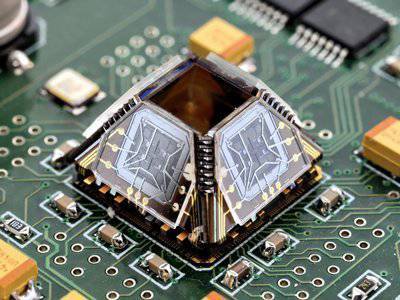 Micro-technology for Positioning, Navigation, and Timing
Micro-technology for Positioning, Navigation, and TimingFor many decades, Global Positioning System or GPS was built into most military navigation equipment. Thus, many types of weapons depend on the data on the location, direction of travel, flight time and the like information transmitted by the system. But such dependence can create big problems, because in conditions of difficult reception or jamming of a signal, a weapon that requires constant communication with the system will not work.
DARPA began the development of the program “Micro-technology for Positioning, Navigation, and Timing (MICRO-PNT)”, the essence of which is to create technologies that allow working in autonomous mode. The key adaptation issues at this stage are size, weight and power. Successful research will create a single device in which all the necessary devices will be combined: accelerometers, clocks, calibration, gyroscopes. Microscopic calibration should provide more accurate guidance to the object due to internal error correction.
In 2010, research began on the development of microtechnologies related to the creation of high-precision clocks and inertial tools.
The program’s development is primarily aimed at increasing the dynamic range of inertial sensors, reducing the clock accuracy, and developing microchips for determining the position and trajectory of movement.
If the program is implemented, then imagine Google Maps in the subway.
Materials used:
http://flot2017.com/posts/new/eti_20_voennyh_proektov__mogut_izmenit_privychnuju_nam_zhizn_foto
Information